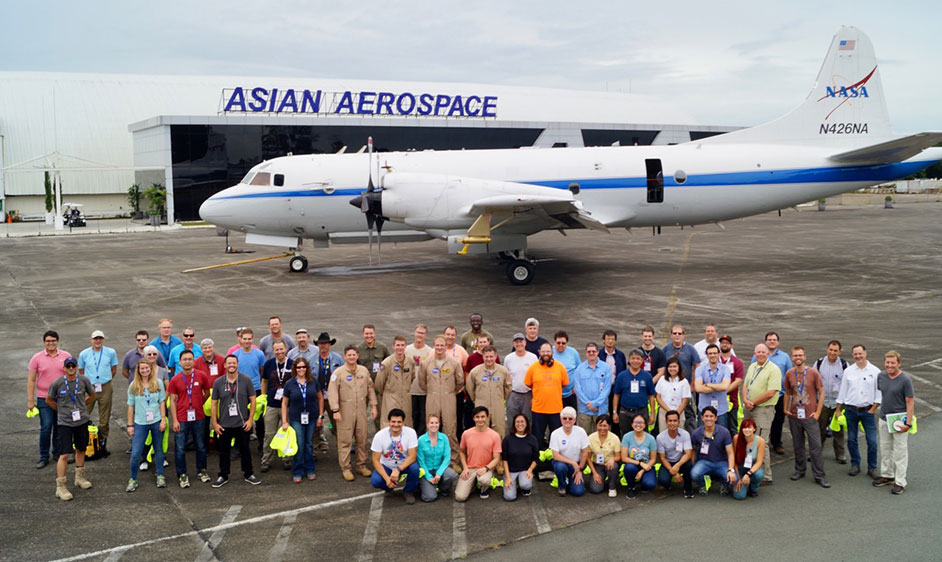Experiment Lends Insight into Effect of Aerosols on Rain Patterns
Researchers from the University of Houston’s Department of Earth and Atmospheric Sciences (EAS) traveled to the Philippines to collaborate in the Cloud, Aerosol and Monsoon Processes Philippines Experiment (CAMP2Ex).

The CAMP2Ex project, run by NASA, studies how aerosols affect cloud formation and precipitation. To answer this question, they are flying research aircraft over the ocean west of the Philippines, gathering measurements about the composition and levels of aerosols, as well as quantifying precipitation levels and cloud formation processes. This will help them understand how aerosols affect rain patterns.
Aerosols: Fine Particulate Matter or Liquid Droplets
Aerosols are the suspension of fine solid particles or liquid droplets in air. Aerosols can come from natural and manmade sources, such as from fog, dust, volcanoes, air pollutants or smoke.
“Aerosols in this region are coming from many different sources, such as wildfires in Borneo and Indonesia, long range transport from continental Asia, local pollution from cities such as Manila, as well as marine air from the Pacific Ocean,” said James Flynn, a research assistant professor of atmospheric sciences in the College of Natural Sciences and Mathematics and one of the researchers involved in the CAMP2Ex project. “Each air source has its own unique fingerprint.”
Two researchers in Flynn’s lab, Sergio Alvarez and Subin Yoon, are also collaborators on the CAMP2Ex project.
Aerosols Act as Cloud Condensation Nuclei
Convection, which is the rising and falling of air, creates a dynamic system that affects how clouds form. In the tropics, convective cloud systems have a significant effect on climate, influencing wind and rain patterns.
Aerosols can act as cloud condensation nuclei, which is when a particle triggers the formation of a cloud droplet. Depending on the type and source of aerosols, this can affect rain formation, and in turn, shape the region’s overall climate.
The CAMP2Ex project will log an estimated 150 flight hours. During these flights, researchers will collect data on aerosol levels, water droplet sizes, light refraction, as well as wind patterns. The information collected will help refine satellite measurements, which are particularly challenging in the region due to the high levels of cloud coverage.
Quantifying How Aerosols Affect Rain Patterns
Quantifying the types and amounts of aerosols, along with wind and rain patterns, will help answer the question of how aerosols affect weather patterns. Answering this question is especially important for local agriculture, as crops are dependent on rainfall levels.
In 2021, a similar project will start up in Houston to analyze how local air pollution affects precipitation levels.
“I’m hoping this will open up more avenues of research and that we can learn more about how to set up the Houston project,” Flynn said.
- Rachel Fairbank, College of Natural Sciences and Mathematics